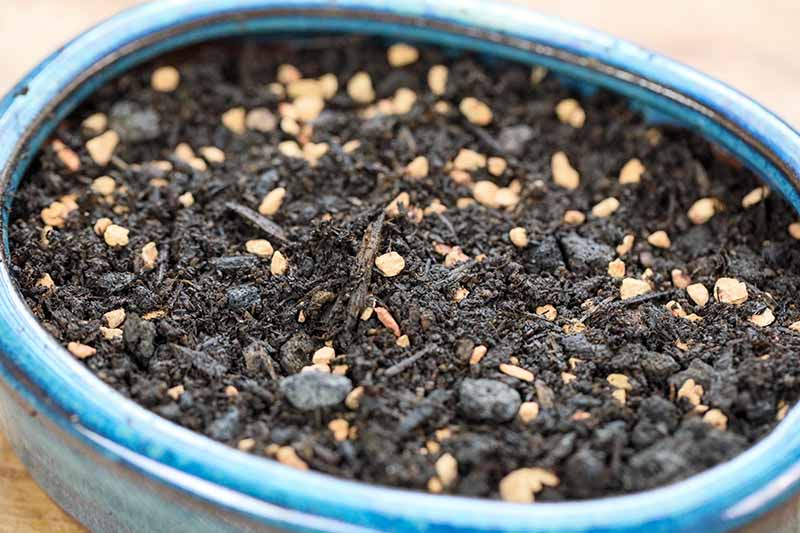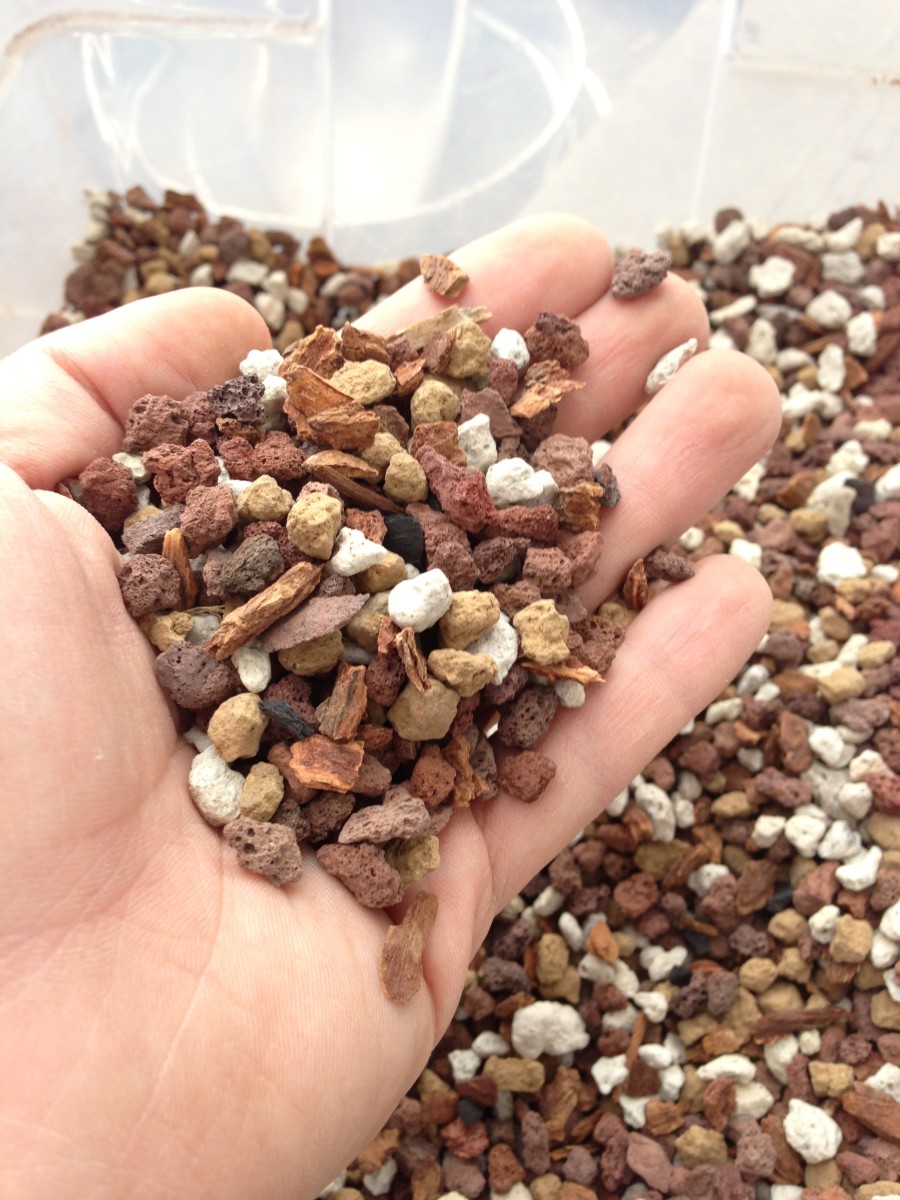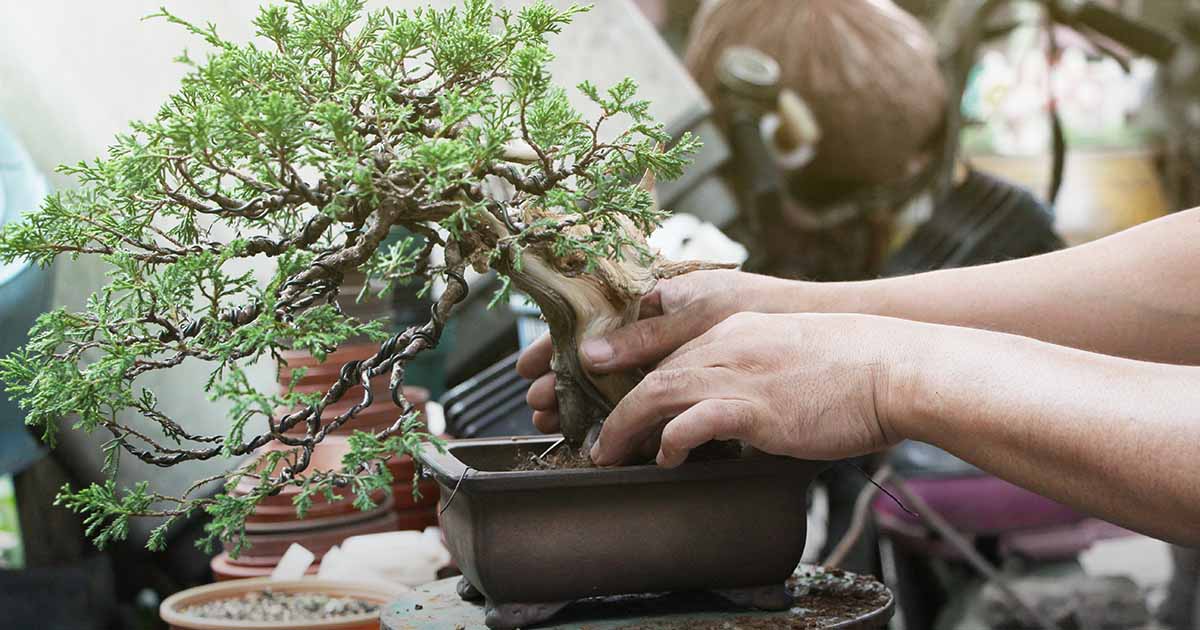On this page, we will explore the different sorts of soil and substrates Utilized in bonsai cultivation, including natural and inorganic choices.
We are going to also learn advisable soil mixtures for many bonsai species, for example deciduous, coniferous, and indoor kinds. From akadama and pumice to moss and river sand, we'll dive to the intriguing earth of bonsai soil and assist you to realize why it's an important Section of cultivating these exquisite trees.

Bonsai soil
What is bonsai soil?
Bonsai soil is a specialized type of soil that is specifically formulated for growing and maintaining bonsai trees. Unlike regular garden soil, bonsai soil is well-draining and provides the necessary nutrients and moisture balance for the tree's root system. The composition of bonsai soil is carefully designed to meet the unique needs of bonsai trees, ensuring their health and longevity.
The importance of bonsai soil
The choice of soil plays a crucial role in the success of your bonsai tree. The right soil provides optimal drainage, allowing excess water to flow freely and preventing root rot. It also promotes a healthy and well-developed root system, which is essential for the overall health and growth of the tree. Bonsai soil retains moisture while allowing air to reach the roots, striking the perfect balance for the tree's needs. Choosing the right bonsai soil is essential for maintaining a healthy and thriving bonsai tree.
Bonsai substrates
What are bonsai substrates?
Bonsai substrates refer to the different materials that can be used to create the ideal soil composition for bonsai trees. These substrates are carefully chosen to meet the specific needs of different species of bonsai trees and to ensure proper water drainage and nutrient availability.
Different types of bonsai substrates
There are various types of bonsai substrates available, each with its own unique characteristics and benefits. Some common bonsai substrates include:
- Organic materials: These include ingredients such as bark, peat moss, and coconut coir. Organic substrates help retain moisture and provide essential nutrients to the bonsai tree.
- Inorganic resources: These involve elements like pumice, lava rock, and akadama. Inorganic substrates offer outstanding drainage, ensuring that extra drinking water will not accumulate across the roots from the bonsai tree.
- Soil amendments: They're substances that are additional into the soil mixture to enhance its Qualities. Samples of soil amendments consist of perlite, vermiculite, and sand. They improve the soil's aeration, h2o-holding capacity, and nutrient availability.
By comprehension the differing types of bonsai substrates as well as their properties, you can decide on the best suited one for the bonsai tree's demands.
Natural and organic or Inorganic Soils
Natural and organic soils for bonsai
Organic and natural soils for bonsai are made up of natural materials such as bark, peat moss, coconut coir, and compost. These materials supply a wealthy source of nutrients for the bonsai tree and market nutritious root improvement. Organic and natural soils also have good drinking water retention Attributes, making sure which the tree gets satisfactory humidity involving watering classes. However, it is vital to notice that natural and organic soils may possibly stop working after a while and come to be compacted, bringing about very poor drainage and possible root problems.
Inorganic soils for bonsai
Inorganic soils for bonsai encompass elements like pumice, lava rock, akadama, and soil amendments like perlite or vermiculite. These components have fantastic drainage properties, stopping waterlogged soil and marketing aeration within the roots. Inorganic soils are chosen by quite a few bonsai fanatics due to their longevity and ability to deliver a stable atmosphere for the bonsai tree's root procedure. On the other hand, They might have to have extra Recurrent watering and extra fertilization, as they don't keep just as much moisture or nutrients as organic and natural soils.
Benefits and drawbacks of employing organic and natural and inorganic soils for bonsai
Selecting between organic and natural and inorganic soils for the bonsai tree is determined by various factors, including the particular species of tree, your local climate, and private preferences. Allow me to share the advantages and disadvantages of each and every:
Organic soils:
- Execs: Give nutrients, excellent h2o retention, endorse wholesome root advancement.
- Negatives: May well break down after a while, potential for poor drainage Otherwise correctly maintained.
Inorganic soils:
- Pros: Outstanding drainage, extensive-Long lasting, secure atmosphere for roots.
- Disadvantages: Considerably less water retention, may possibly demand additional Regular watering and fertilization.
By considering the benefits and drawbacks of the two natural and organic and inorganic soils, you may make an informed final decision based on the specific requires within your bonsai tree.
Soil parts
Essential components of bonsai soil
Bonsai soil is often made up of 3 main components: grit, natural and organic subject, and clay. These elements perform jointly to make The best soil composition to the bonsai tree's root program.
- Grit: Grit, like sand or perlite, offers drainage and aeration inside the soil. It can help reduce waterlogging and lets air to get to the roots.
- Natural subject: Organic subject, including compost or bark, presents nutrients for the bonsai tree. In addition it assists keep humidity and improve the soil's All round structure.
- Clay: Clay particles supply some water retention attributes and aid bind the soil with each other. Even so, too much clay can cause very poor drainage and compaction.
Role of each soil component
Every single soil element performs an important function in creating a nicely-balanced and healthful environment to the bonsai tree's roots.
- Grit: Grit gives the required drainage and aeration during the soil. It helps prevent the roots from sitting in stagnant water, cutting down the potential risk of root rot and endorsing General root wellbeing.
- Natural make a difference: Natural issue offers necessary nutrients on the bonsai tree. It aids in moisture retention and contributes to the overall construction on the soil.
- Clay: Clay particles assistance bind the soil with each other and provide some drinking water retention capability. On the other hand, it is vital to balance the amount of clay to prevent concerns like very poor drainage and compaction.
By knowledge the roles of every soil ingredient, you can develop a balanced bonsai soil mix that get more info satisfies the particular desires of your respective tree.

Recommended Bonsai soil mixtures
Common bonsai soil mixtures
There are several common bonsai soil mixtures that have been proven effective for various types of bonsai trees. These mixtures typically consist of a combination of inorganic substrates, organic matter, and soil amendments.
Some of the commonly used bonsai soil mixtures include:
- Akadama, pumice, and lava rock: This mixture is popular among bonsai enthusiasts for its excellent drainage and water retention properties.
- Akadama, lava rock, and organic subject: This mixture combines the key benefits of inorganic substrates Along with the nutrient-abundant Attributes of natural and organic make any difference.
- Pumice, perlite, and bark: This combination presents good drainage and aeration when retaining some humidity and giving nutrients.
They're just some samples of bonsai soil mixtures, and The perfect combination will rely on the precise wants of the bonsai tree as well as your weather.
Components to look at when deciding upon a bonsai soil combination
When deciding on a bonsai soil mixture, it is important to think about the following factors:
- Species of bonsai tree: Different species have different humidity and nutrient necessities. Investigation the particular wants of one's tree to select a soil combination that fulfills its specifications.
- Weather: The local weather you live in can affect the dampness retention Qualities of your soil. Take into account the average humidity and temperature in your neighborhood When picking a soil combination.
- Watering behaviors: Your individual watering habits and routine should align Using the soil combination you decide on. Some mixtures call for a lot more frequent watering, while some retain moisture for for a longer period periods.
- Spending plan: Some soil factors can be more expensive than Other folks. Consider your finances when picking a soil mixture.
By taking these components into consideration, you may go with a bonsai soil combination that gives the ideal escalating disorders in your tree.
Deciduous Bonsai soil
Greatest soil composition for deciduous bonsai
Deciduous bonsai trees, like maple or birch, have unique soil demands to help their progress and well being. The best soil composition for deciduous bonsai commonly includes a mix of natural and organic issue, inorganic substrates, and soil amendments.
A recommended soil composition for deciduous bonsai may well contain:
- Akadama: Provides fantastic water retention though making it possible for for drainage. Additionally, it releases nutrients slowly but surely after a while.
- Pumice: Promotes aeration and drainage from the soil, preventing waterlogging.
- Bark or peat moss: Provides natural and organic matter towards the soil, giving nutrients and humidity retention.
This soil composition makes certain that the roots of deciduous bonsai trees get the appropriate harmony of dampness, nutrients, and oxygen for optimum development.

Coniferous and Pine soil
Ideal soil mixture for coniferous and pine bonsai
Coniferous and pine bonsai trees have specific soil requirements due to their water retention needs and preference for acidic soil. An ideal soil mixture for coniferous and pine bonsai should provide good drainage while retaining moisture and maintaining the desired pH level.
A recommended soil mixture for coniferous and pine bonsai may include:
- Akadama: Provides excellent water retention while allowing for sufficient drainage. It releases nutrients slowly over time.
- Pumice: Promotes aeration and drainage inside the soil, stopping waterlogged roots.
- Peat moss: Adds natural and organic subject and acidity to your soil, developing an excellent pH degree for coniferous and pine trees.
This soil mixture ensures that the roots of coniferous and pine bonsai trees receive the right balance of humidity, nutrients, and acidity for his or her certain requirements.
Akadama
What's akadama?
Akadama can be a form of clay soil that is certainly extensively used in bonsai cultivation. It can be recognized for its fantastic h2o retention Homes, which make certain a steady source of dampness on the bonsai tree's roots. Akadama is additionally prized for its ability to launch nutrients slowly and gradually with time, supplying a regular source of nourishment for that tree.
Benefits of using akadama in bonsai soil
Employing akadama in bonsai soil provides quite a few Advantages:
- H2o retention: Akadama has Excellent h2o retention Homes, allowing it to carry moisture with no getting to be waterlogged. This ensures that the bonsai tree's roots get a steady offer of drinking water, promoting healthier growth.
- Nutrient launch: Akadama slowly releases nutrients to the soil over time, supplying a reliable source of nourishment to the bonsai tree. This cuts down the need for Repeated fertilization and helps maintain a balanced nutrient profile.
- Aeration: Inspite of its water retention capabilities, akadama also delivers sufficient aeration on the bonsai tree's roots. It allows air to get to the root system, avoiding challenges like root rot resulting from not enough oxygen.
By incorporating akadama into the bonsai soil, it is possible to build an optimum increasing environment to your tree, making sure its wellness and vitality.

Lava rock
How lava rock benefits bonsai soil
Lava rock is a popular component in bonsai soil mixtures due to its excellent drainage and aeration properties. It is typically used in conjunction with other substrates to create the ideal soil composition for bonsai trees.
The benefits of lava rock in bonsai soil include:
- Drainage: Lava rock provides excellent drainage, preventing waterlogging and ensuring that excess water flows freely through the soil. This helps prevent root rot and provides a healthy environment for the roots to thrive.
- Aeration: The porous character of lava rock lets air to circulate within the soil, offering oxygen on the bonsai tree's root program. Right aeration is very important for healthy root improvement and All round tree expansion.
- Longevity: Lava rock is usually a long lasting product that does not stop working quickly. This makes sure that the soil composition continues to be steady after some time, lessening the necessity for Recurrent soil replacements.
Lava rock is out there in various dimensions and shapes, allowing for customization according to the specific requirements of one's bonsai tree and soil specifications.
Differing types of lava rock
You can find differing types of lava rock which can be used in bonsai soil mixtures, such as:
- Black lava rock: Black lava rock is really a commonly utilized product in bonsai soil mixtures. It offers fantastic drainage Houses and adds an aesthetic component to the overall presentation in the bonsai tree.
- Crimson lava rock: Red lava rock is yet another well known decision in bonsai soil mixtures. It offers similar drainage and aeration benefits as black lava rock but has a definite reddish coloration that adds visual desire on the container.
The two black and red lava rocks are extensively readily available and might be very easily incorporated into your bonsai soil combination.
Potting
Vital strategies for successful bonsai potting
Potting is really a critical system in bonsai cultivation, since it immediately impacts the well being and growth of your tree's roots. Here are several crucial tips for prosperous bonsai potting:
- Select the ideal pot dimensions: Pick a bonsai pot that allows for root advancement although continue to delivering a snug healthy. Stay away from pots that are too substantial, as they may result in excessive soil dampness and weak root advancement.
- Use bonsai wire: Protected the tree inside the pot using bonsai wire to be sure steadiness. This helps prevent the tree from shifting or turning into uprooted through watering or powerful winds.
- Trim and unfold the roots: Ahead of potting the bonsai tree, meticulously trim and spread out the roots. This encourages outward progress and helps prevent root tangling or root-bound concerns.
- Increase mesh screens: Location mesh screens about the drainage holes at the bottom with the pot to stop soil erosion and guarantee correct drainage.
- Use contemporary bonsai soil: When potting, constantly use fresh bonsai soil to deliver the necessary nutrients and best expanding problems with the roots.
By adhering to these critical tips, you are able to make certain a successful potting system and promote the overall health and development within your bonsai tree.
The position of bonsai pots in soil humidity Command
Bonsai pots play an important function in soil dampness Command, specifically impacting the overall health and expansion in the tree. Bonsai pots are typically shallow and also have drainage holes, making it possible for excessive water to flee and blocking the soil from turning into waterlogged.
The design of bonsai pots encourages evaporation and air circulation, which aids control soil moisture stages. The shallow depth and huge opening in the pot expose far more floor area in the soil to your air, aiding in moisture evaporation. This prevents the roots from sitting down in excessively moist soil, cutting down the risk of root rot along with other drinking water-related challenges.
In addition, the drainage holes in bonsai pots let any excessive water to escape, protecting against waterlogged soil and endorsing aeration across the roots. Correct aeration is important for the overall health and improvement of the foundation system, making certain the bonsai tree gets the required oxygen for advancement.
By using bonsai pots designed for productive dampness Command, you are able to develop a good surroundings for the bonsai tree's roots and advertise its Total wellbeing and vitality.
In summary, picking out check here the appropriate bonsai soil is important for the results and health of the bonsai tree. Comprehending the differing types of bonsai substrates, the job of natural and organic and inorganic soils, the key components of bonsai soil, and the varied advisable soil mixtures will help you supply the optimal expanding situations for your personal bonsai tree. Regardless of whether you've got a deciduous or coniferous bonsai, incorporating resources like akadama and lava rock can increase the soil's drainage and nutrient availability. Moreover, listening to potting approaches and applying bonsai pots made for moisture control will further support the flourishing growth of one's bonsai tree. With suitable comprehension and implementation of bonsai soil procedures, it is possible to benefit from the attractiveness and artistry of bonsai cultivation For several years to come back.
